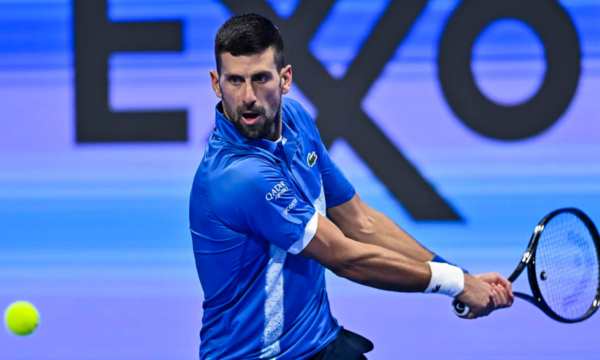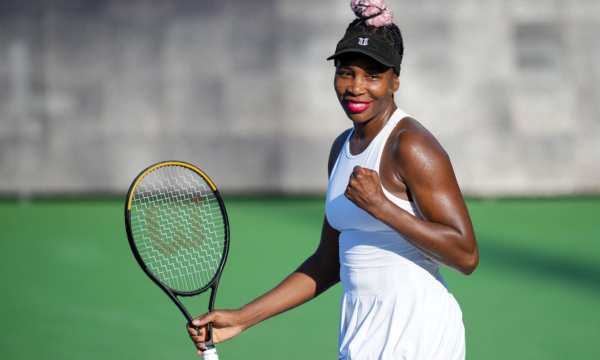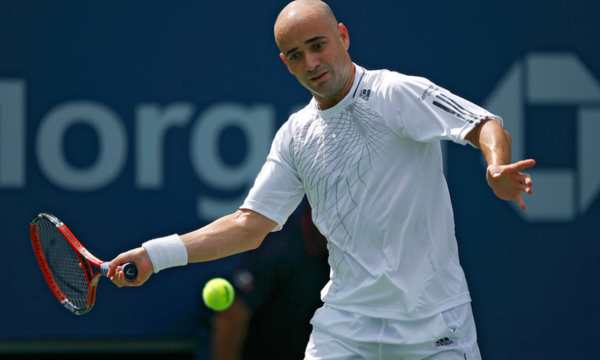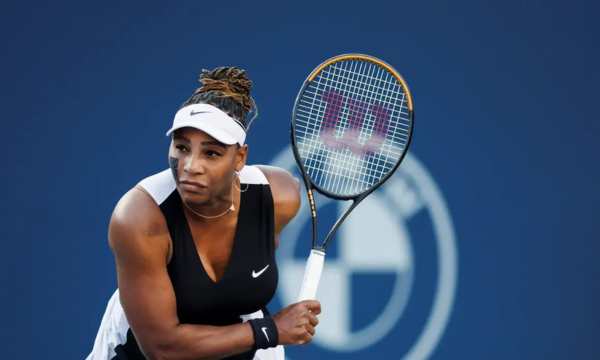Tennis Players: The 10 Greatest Champions of All Time
Get to know the history and legacy of the 10 greatest tennis players of all time!
Anúncios
The search for the best tennis players in history always sparks heated debates among fans and sports experts.
Each era produced legends who dominated the courts with unique styles and impressive achievements.
In this article, we analyze not only Grand Slam titles but also the longevity, cultural impact, and technical innovation of these extraordinary athletes.
Novak Djokovic
Novak Djokovic began his tennis journey at the age of four in Belgrade when coach Jelena Genčić discovered his exceptional potential.
During his childhood in Serbia, he trained under adverse conditions, which contributed to his becoming one of the best tennis players with his extraordinary physical flexibility and transformed defense.
Notable achievements of Djokovic:
- Record holder for men’s Grand Slam titles (24).
- The only player to win each Grand Slam at least three times.
- Most weeks as world number 1 (419).
- Completed the “Nole Slam” twice (four consecutive Grand Slams).
His playing style combines impeccable serve returns with defense transformed into plays through perfect slides on all surfaces.
Interestingly, he practices meditation and yoga daily, techniques that contribute to his incredible mental capacity to turn seemingly lost matches around.
His Novak Djokovic Foundation invests millions in child education in Serbia, demonstrating his commitment to future generations.

Novak-Djokovic-(Source-Google)
Serena Williams
Serena Williams began her journey on the public courts of Compton, California, where her father Richard implemented a detailed training plan.
Her revolutionary playing style combines powerful serves (regularly exceeding 200 km/h) with precise groundstrokes and surprising athletic movement.
- 23 Grand Slam singles titles.
- 73 WTA titles and $94 million in prize money.
- 319 weeks as world number 1.
- Completed the “Serena Slam” twice (simultaneous possession of the four majors).
Serena redefined women’s tennis with her physical and mental power, inspiring generations of young players.
Among tennis players with the greatest cultural impact, Serena transcended the sport, appearing in Vogue, developing her own fashion brand, and producing documentaries.
Interestingly, during the 2017 Australian Open, she was eight weeks pregnant when she defeated Venus in the final, winning her 23rd Grand Slam under conditions few would have imagined possible.
Rafael Nadal
Rafael Nadal discovered tennis at the age of four in Mallorca, guided by his uncle Toni, who identified his natural talent and imposed rigorous discipline.
Although naturally right-handed, he was trained to play left-handed, developing the devastating forehand with top spin that would become his trademark.
His intense and physical playing style revolutionized the approach to clay, creating impossible angles and unprecedented ball height.
Nadal’s greatness in numbers:
- 14 titles at Roland Garros.
- 22 Grand Slam titles.
- 209 weeks as world number 1.
- 81 consecutive wins on clay courts (2005-2007).
- Olympic gold medal in singles (2008) and doubles (2016).
Among all tennis players, Nadal is recognized for his extreme humility and exemplary work ethic, treating each point with maximum intensity regardless of the score.
His meticulous rituals have become legendary: precise alignment of water bottles, adjusting hair and clothes in a specific sequence, and never stepping on the lines between points.
Venus Williams
Venus Williams started playing tennis at the age of four on public courts in Compton, where her father Richard conducted rigorous training even under adverse conditions.
Her height (1.85m) and exceptional wingspan allowed her to develop a playing style based on powerful serves and precise volleys, revolutionizing power in women’s tennis in the 1990s.
- 7 Grand Slam singles titles (5 at Wimbledon).
- 4 Olympic gold medals (1 in singles, 3 in doubles with Serena).
- 11 weeks as world number 1.
- Led the fight for equal prize money at Wimbledon, achieved in 2007.
Her longevity is extraordinary – she debuted professionally in 1994 and was still competing three decades later, adapting her game to the sport’s changes.
A successful businesswoman, she graduated in Interior Design during her active career and founded V Starr Interiors and the clothing brand EleVen, demonstrating her entrepreneurial vision.
Interestingly, she became the first African-American female tennis player to reach world number 1 in the Open Era.

Venus-Williams-(Source-Google)
Roger Federer
Roger Federer picked up his first racket at the age of eight in Basel, Switzerland, initially dividing his passions between tennis and football until he was 12.
His playing style revolutionized the sport with almost artistic technical fluidity, perfect timing, and apparent effortlessness in devastating shots.
Impressive records:
- 20 Grand Slam titles.
- 8 titles at Wimbledon.
- 237 consecutive weeks as world number 1.
- 369 matches won in Grand Slams.
Among the most versatile tennis players, Federer adapted his game over two decades, evolving from an impatient attacker to a complete strategist.
His racket with a larger head (97 square inches) and the “Sneak Attack by Roger” (SABR) technique prolonged his career at a high level after the age of 35.
His balance between family life (he is the father of two pairs of twins) and professional career challenges elite athlete stereotypes.
Steffi Graf
Steffi Graf began her journey when her father Peter adapted a racket by cutting the handle for his daughter to practice against the family garage wall in Brühl, Germany.
Her early talent was evident – by the age of 13, she was already competing professionally, and by 19, she had achieved the historic “Golden Slam,” then considered one of the best tennis players in history.
Her unique playing style combined a powerful forehand with a sharp backhand slice, exceptional mobility, and an unwavering mentality under pressure.
- The only tennis player to achieve the “Golden Slam” (four Grand Slams + Olympic gold in the same year – 1988).
- 377 weeks as world number 1.
- 22 Grand Slam singles titles.
- 107 singles titles on the WTA circuit.
Her 1988 French Open final against Natasha Zvereva set the record for the fastest Grand Slam match (32 minutes, 6-0, 6-0).
Married to Andre Agassi since 2001, they created the Andre Agassi Foundation for Education together, combining their philanthropic influences.
Her privacy after retirement is legendary – she rarely gives interviews and makes few public appearances, preferring to dedicate herself to family and discreet social projects.
Andre Agassi
Andre Agassi had an unusual start in tennis. His father, an Iranian Olympic boxer, hung tennis mobiles over his crib and built homemade machines to throw balls adapted for a child.
Sent against his will to the Nick Bollettieri academy at the age of 13, he developed a revolutionary playing style based on flat shots, perfect timing, and a serve return considered the best of all time.
- The only man to achieve the “Career Golden Slam” (all Grand Slams + Olympic gold).
- 8 Grand Slam titles on three different surfaces.
- 101 weeks as world number 1.
- Won 870 matches in a 20-year career.
Agassi staged the greatest comeback in tennis history – he fell to 141st in the rankings in 1997 before returning to the top of the world and winning five Grand Slams after the age of 29.

Andre-Agassi-(Source-Google)
John McEnroe
John McEnroe discovered tennis at the age of eight at the Douglaston Club in Queens, New York, developing a unique self-taught style with a continental grip on all shots.
Without going through the traditional intensive junior training system, McEnroe surprised the world by reaching the Wimbledon semifinals in 1977 as a Stanford University amateur player.
His aggressive net play and precise volleys set new standards for offensive tennis.
- 7 Grand Slam singles titles (3 Wimbledon, 4 US Open).
- 9 Grand Slam doubles titles.
- 170 weeks as world number 1 in singles.
- 270 weeks as number 1 in doubles.
Among the most charismatic tennis players, McEnroe turned this sport into an emotional spectacle with his famous confrontations with referees.
As a commentator, he transformed into a respected and often self-ironic voice, analyzing behaviors similar to those he exhibited on the court.
His McEnroe Tennis Academy in New York develops young talents with an approach that emphasizes creativity and feel for the ball, contrasting with the dominant standardized technical model.
Billie Jean King
Billie Jean King started playing tennis at the age of 11 in Long Beach, California, using an $8 racket bought with money saved from small jobs.
Without resources for private lessons, she practiced tirelessly on public courts while her father worked as a firefighter.
Her assertive and tactical playing style revolutionized women’s tennis, bringing an attacking approach to the net when most players stayed at the baseline.
- 39 combined Grand Slam titles (12 singles, 16 doubles, 11 mixed doubles).
- Founder of the WTA (Women’s Tennis Association) in 1973.
- Creator of the magazine “Tennis” and the Women’s World Tennis League.
- The first woman to coach a professional men’s team.
Among the tennis players with the greatest social impact, King fundamentally transformed the sport by demanding equal prize money.
Interestingly, the player who physically dominated the courts was only 1.64m tall, compensating with extraordinary speed and tactical intelligence.
She received the Presidential Medal of Freedom in 2009 for her contributions to civil rights. Her Billie Jean King Leadership Initiative continues to promote diversity and inclusion in sports and business, expanding her legacy for new generations.
Monica Seles
Monica Seles began her tennis journey at the age of five in the former Yugoslavia (now Serbia), inspired by her older brother.
Her father Karolj, a professional cartoonist, created creative training methods, drawing animal figures on the courts to teach positioning.
At 13, she moved to the Nick Bollettieri academy in Florida, where she developed her revolutionary two-handed style on both sides.
Career achievements:
- Youngest champion of Roland Garros (16 years and 6 months).
- 9 Grand Slam titles before the age of 20.
- 178 weeks in the top 2 of the world rankings.
- 93% win rate between 1990-1993.
Seles revolutionized women’s tennis with flat, powerful shots taken on the rise, eliminating opponents’ reaction time.
Among the most resilient tennis players, Seles returned after two years of absence to win the 1996 Australian Open, demonstrating extraordinary courage.
Interestingly, she played without looking at the scoreboard during matches, a mental technique later adopted by several tennis players.
After retirement, she became an author of children’s books and memoirs, as well as a mental health advocate, using her experience to help other athletes overcome trauma.
Final Considerations
The greatest tennis players of all time not only won titles but transformed the sport with their technique, personality, and legacy.
The evolution of tennis continues to be shaped by the standards set by these legends, inspiring new generations to strive for excellence.
The debate about “the best of all” will always remain alive, reflecting the rich history and passion that tennis arouses in millions of fans around the world.
FAQ
How is the world ranking calculated in professional tennis?
What is the “Serena Slam”?
Why is Steffi Graf’s “Golden Slam” considered so extraordinary?
What is Roger Federer’s “SABR”?
Which of these tennis players had the greatest impact off the court?
 WTA Tennis: A Complete Guide to the Current Women’s Circuit
WTA Tennis: A Complete Guide to the Current Women’s Circuit
WTA: the circuit that revolutionized women’s tennis worldwide! Anúncios This professional circuit has transformed athletes into global icons and redefined standards in women’s sports. Each season, […]
Keep reading Learn All About the ATP: The Elite of Men’s Tennis in 2025
Learn All About the ATP: The Elite of Men’s Tennis in 2025
Discover how the ATP has transformed men’s tennis into a professional and highly competitive global circuit. Anúncios Today, the Association of Tennis Professionals represents the pinnacle […]
Keep reading Serena Williams: The Journey and Records of the Tennis Legend
Serena Williams: The Journey and Records of the Tennis Legend
Serena Williams transformed women’s tennis with a powerful playing style that we had never witnessed on professional courts. Anúncios More than an extraordinary athlete, she became […]
Keep reading